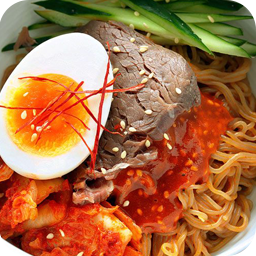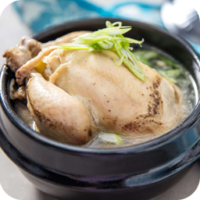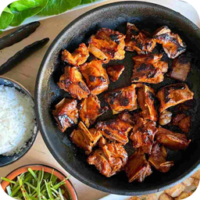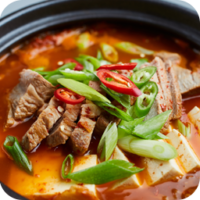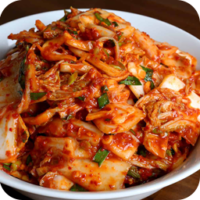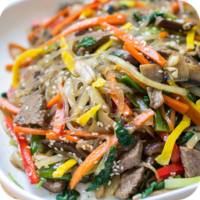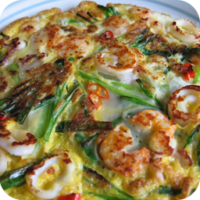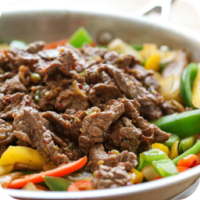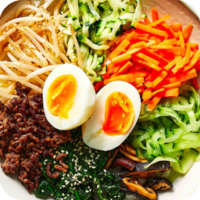Naengmyeon (냉면) is a popular South Korean cold noodle dish, especially enjoyed during the hot summer months for its refreshing and cooling qualities. The name “Naengmyeon” translates to “cold noodles”, and it is typically served in a chilled broth or as spicy mixed noodles without broth. This dish originated in North Korea but became widely popular throughout South Korea after the Korean War.
Types of Naengmyeon:
- Mul Naengmyeon (물 냉면):
- Served in a cold, tangy broth made from beef or dongchimi (radish water kimchi) and often topped with ice for extra chill.
- Garnished with cucumber slices, Korean pear, boiled egg, and sliced beef.
- The broth has a slightly sweet, savory, and tangy flavor, often enhanced with vinegar and mustard.
- Bibim Naengmyeon (비빔 냉면):
- Served without broth, featuring spicy gochujang (red chili paste) sauce.
- Mixed with vegetables, boiled egg, and sometimes sliced meat.
- It has a bold, spicy, and tangy flavor compared to the milder Mul Naengmyeon.
Key Ingredients:
- Noodles:
- Made from buckwheat, potato starch, or sweet potato starch, giving them a chewy and elastic texture.
- Broth (for Mul Naengmyeon):
- Chilled and made with beef stock, chicken stock, or radish kimchi brine.
- Sauce (for Bibim Naengmyeon):
- A spicy, sweet, and tangy mixture of gochujang, garlic, vinegar, sesame oil, and sugar.
- Toppings:
- Sliced cucumber, radish, pear, boiled egg, and cold beef slices.
Flavor Profile:
- Mul Naengmyeon: Mild, tangy, refreshing, and savory.
- Bibim Naengmyeon: Spicy, sweet, tangy, and bold.
How It’s Served:
- Mul Naengmyeon is served with cold broth and ice, making it incredibly refreshing.
- Bibim Naengmyeon is served with a spicy sauce and often mixed before eating.
- Both are typically accompanied by vinegar and hot mustard for added tang and heat.
Cultural Significance:
- Often eaten during summer to cool down, but also enjoyed in winter as a nostalgic comfort food.
- Associated with North Korean cuisine, especially from the Pyongyang and Hamhung regions.

